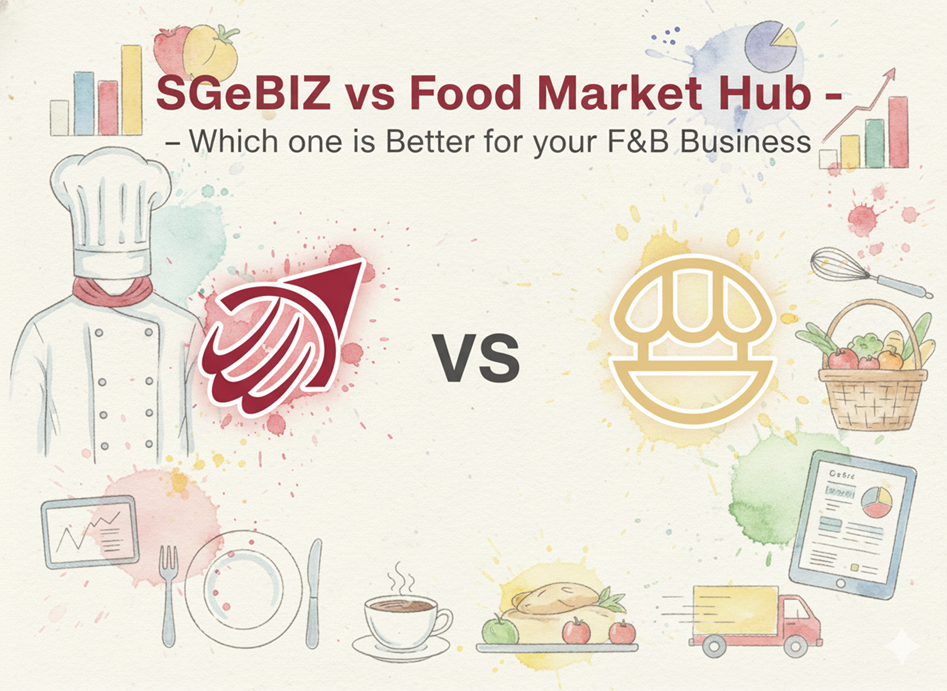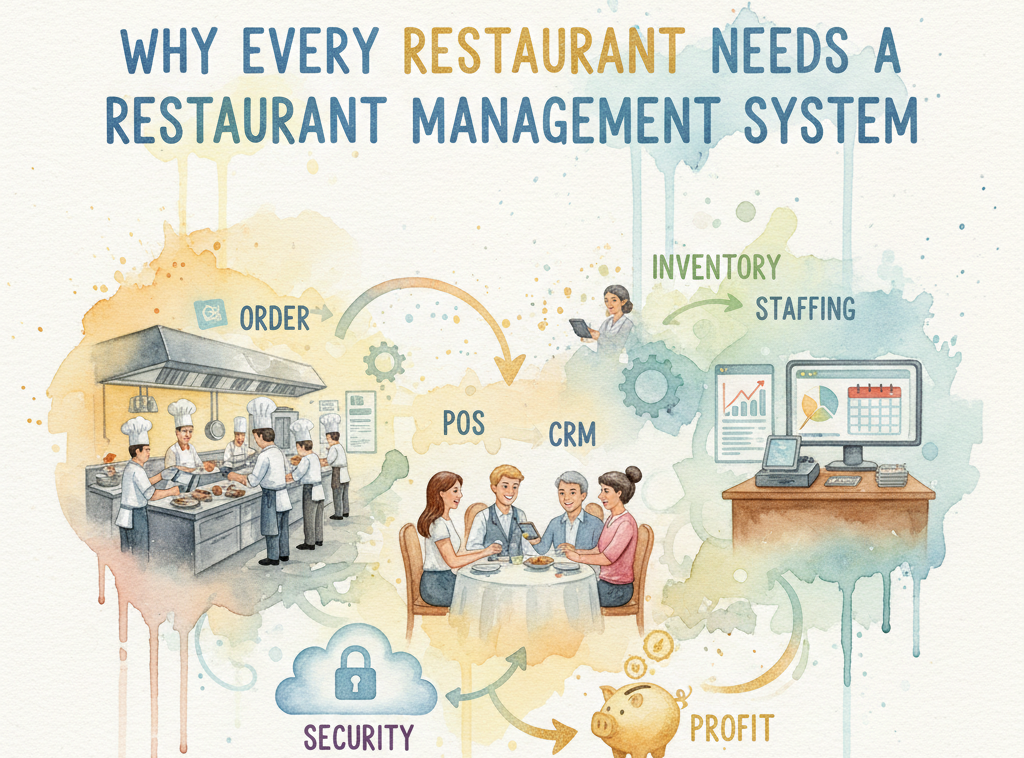Food Cost Percentage (Comprehensive Guide)

If you serve food to customers, you know how important it is to control costs. One of the biggest expenses you have in your restaurant is the cost of ingredients. Knowing your food cost percentage helps you understand how much of your money goes into making each dish. This guide will explain what food cost percentage is, how to calculate it, and why it matters. You will also learn how to keep it under control and how a good supplier management system can help you save money.
What Is Food Cost Percentage?
Food cost percentage is the amount of money you spend on ingredients compared to the money you earn from selling the food. It is a way to measure how much of your sales go back into buying supplies. For example, if you spend RM 2 on ingredients for a dish you sell for RM 10, your food cost percentage is 20%.
This number helps you see if you are pricing your dishes right and if you are managing your supplies well. If your food cost percentage is too high, you might not be making enough profit. If it is too low, you might be charging too much or compromising on quality.

How to Calculate Food Cost Percentage
You can find your food cost percentage using a simple formula:
Food Cost Percentage = (Cost of Ingredients / Revenue from Food Sales) x 100
Here’s how it works:
- Find the cost of ingredients – Add up how much you spend on food supplies in a given time (like a week or a month).
- Find the revenue from food sales – Check how much money you made from selling food in the same period.
- Divide the cost by the revenue – This gives you a decimal number.
- Multiply by 100 – This turns the decimal into a percentage.
For example, if you spent RM 5,000 on ingredients in a month and made RM 20,000 from food sales, your food cost percentage is (5,000 / 20,000) x 100 = 25%.
Why Is Food Cost Percentage Important?
Helps You Price Dishes Correctly
One of the biggest reasons to track your food cost percentage is to make sure you are pricing your dishes correctly. If your food cost is too high, you might not be charging enough to cover your expenses. For example, if a dish costs RM 8 to make but you sell it for RM 15, your food cost percentage is around 53%, which is too high. You may need to either increase the price or find ways to lower ingredient costs.
On the other hand, if your food cost percentage is too low, you might be overcharging customers, which could drive them away. Finding the right balance ensures your prices are fair while keeping your business profitable.
Reduces Food Waste
A high food cost percentage often means you are wasting ingredients. If you buy too much stock and don’t use it before it spoils, you lose money. Tracking your food costs helps you see where waste happens. For example, if you notice that vegetables go bad before you use them, you can adjust your orders or find ways to use them in different dishes.
Waste also happens when portions are too big. If customers leave food on their plates, you might be giving them more than they need. Controlling portion sizes based on your calculations of food cost can help reduce waste and keep costs in check.
Increases Profit Margins
The lower your food cost percentage, the more profit you make. If you spend RM 30 on ingredients for every RM 100 in sales, you keep RM 70. But if your food cost rises to RM 40, your profit drops to RM 60. Small changes in food costs can make a big difference in your earnings over time.
By keeping an eye on your average restaurant food cost per month, you can spot trends. If costs suddenly go up, you can investigate whether suppliers raised prices or if your kitchen is being inefficient. Fixing these issues early helps protect your profits.

Helps You Stay Competitive
Customers care about both price and quality. If your food cost percentage is too high, you may have to raise prices, making your meals more expensive than competitors. If it’s too low, you might be using cheaper ingredients, which can affect taste and customer satisfaction.
Finding the right ideal food cost percentage (between 25% and 35%) helps you offer good food at reasonable prices. This balance keeps customers happy while ensuring you make enough profit to grow your business.
Prevents Financial Losses
Without tracking food cost percentage, you might not realize when you’re losing money. For example, if a popular dish has a high food cost, you could be selling a lot but making very little profit. Some dishes may even cost more to make than what you charge.
Regularly calculating food cost helps you identify these problems. You can then adjust recipes, change suppliers, or update your menu to avoid losing money on certain items.
Supports Better Decision Making
When you know your food cost percentage, you can make smarter choices. For example, should you buy ingredients in bulk? Should you change suppliers for better prices?, Should you remove or modify a dish that isn’t profitable? Having this data helps you decide what changes will improve your business.
Industry Standards and Benchmarks
According to the National Restaurant Association, most places spend 28-35% of their sales on food costs. If your percentage is much higher, it’s a sign that you need to take action. Comparing your numbers to industry averages helps you see if you’re on the right track.
Ignoring your food cost percentage means you could be losing money without even knowing why. Tracking it regularly ensures you stay profitable and run a successful business.
What Is the Ideal Food Cost Percentage?
Most experts say a good food cost percentage is between 25% and 35%. This means for every RM 100 you make from selling food, you should spend only RM 25 to RM 35 on ingredients.
If your percentage is higher than 35%, you may be spending too much on supplies or wasting food. If it is lower than 25%, you might be charging too much or using low-quality ingredients, which can drive customers away.

How to Keep Food Cost Percentage in the Ideal Range
1. Track Inventory Regularly
Keeping a close watch on your inventory is one of the most effective ways to control your food cost percentage. When you know exactly what ingredients you have, how much you use, and what gets wasted, you can make smarter purchasing decisions.
Start by conducting weekly or monthly inventory checks. Compare what you ordered with what was used. If you notice that certain ingredients frequently spoil before being used, adjust your ordering quantities. For example, if fresh herbs often go bad, consider buying smaller batches or switching to frozen alternatives where possible.
Using inventory management software can simplify this process. These tools help track stock levels in real-time, send alerts when supplies run low, and even predict future needs based on past usage. This prevents over-ordering and reduces unnecessary spending.
2. Reduce Food Waste
Food waste directly increases your food cost percentage because you’re paying for ingredients that never make it to the customer’s plate. To minimize waste, train your kitchen staff on proper storage techniques to extend ingredient shelf life. For example, storing vegetables at the right temperature and humidity can prevent premature spoilage.
Another strategy is repurposing leftovers. Vegetable trimmings can be used for stocks, and yesterday’s bread can become croutons or breadcrumbs. Creating daily specials based on ingredients that need to be used soon can also help reduce waste while keeping your menu fresh.
Portion control is another key factor. If customers consistently leave food uneaten, your servings may be too large. Adjusting portion sizes ensures you’re not giving away more than necessary, which keeps costs in check.
3. Adjust Menu Prices Strategically
Not all dishes contribute equally to your profits. Some may have a high food cost percentage, meaning they cost more to make relative to what you charge. Regularly reviewing your menu’s profitability helps identify which items need price adjustments or replacements.
For dishes with expensive ingredients, consider increasing the price slightly or finding ways to reduce costs without sacrificing quality. For example, if a seafood dish has a 40% food cost, you might adjust the portion size or substitute a more affordable but still high-quality ingredient.
Alternatively, promote dishes with lower food costs and higher profit margins. Highlighting these items can encourage customers to order them, improving your overall profitability.
4. Negotiate with Suppliers for Better Deals
Building strong relationships with suppliers can lead to better pricing and terms. If you consistently order large quantities, ask for bulk discounts. Many suppliers are willing to offer better rates to loyal customers who pay on time.
Don’t rely on just one supplier—compare prices from multiple vendors. Even small savings per unit add up over time. For example, if you save RM 0.50 per kilogram on chicken, and you use 200 kg per month, that’s RM 100 saved monthly.
Seasonal purchasing is another smart strategy. Buying fruits, vegetables, and seafood when they’re in season often means lower prices and better quality. Adjusting your menu to feature seasonal ingredients can help keep costs down.
5. Use a Supplier Management System
A supplier management system simplifies your purchasing process, helping you control costs more effectively. These systems allow you to track orders, compare supplier prices, and manage invoices in one place.
One major advantage is price tracking. You can keep an eye on your previous prices via detailed reports that have all the order details. Through these reports, you can analyse whether a supplier has increased prices or not. You won’t be placing orders blindly anymore.
One of the most important metrics is the food cost, and maybe you are already preparing MIS data in your restaurant, but the drawback of that data is that it will give you only the cumulative COGS. You won’t be able to monitor your cogs ingredient-wise. But software like the food market hub can help you in finding the ingredient-level cogs, which can help you find out your most-used ingredient. You can easily track your ingredients batch-wise using this.

Automation reduces human errors, such as duplicate orders or incorrect invoices, which can inflate costs. By digitizing your procurement process, you gain better visibility into spending patterns and can make data-driven decisions to keep your food cost percentage in the ideal 25-35% range.
Implementing these strategies consistently will help you maintain control over expenses while maximizing profits. The key is to monitor, adjust, and optimize continuously rather than making changes only when problems arise.
FAQs (Frequently Asked Questions)
1.What is food cost?
Food cost is the amount of money you spend on ingredients to prepare the dishes you sell.
2.What is the food cost percentage formula?
The formula is: (Cost of Ingredients / Revenue from Food Sales) x 100.
3.How do I calculate food cost?
Add up what you spend on ingredients in a week or month. Divide that by the money you make from food sales in the same period. Multiply by 100 to get the percentage.
4.What is the average restaurant food cost per month?
Most places spend between 28% and 35% of their food sales on ingredients each month.
5.What is an ideal food cost percentage?
A good range is 25% to 35%. Lower than 25% may mean overcharging, and higher than 35% may mean overspending.
6.How can we reduce the food cost percentage?
You can reduce waste, negotiate with suppliers, adjust menu prices, and use a supplier management system to track expenses better.
Keeping your food cost percentage under control is key to making a good profit. By tracking your expenses, reducing waste, and using smart tools like a supplier management system, you can keep costs low without sacrificing quality. Start calculating your food cost percentage today and see where you can improve!










